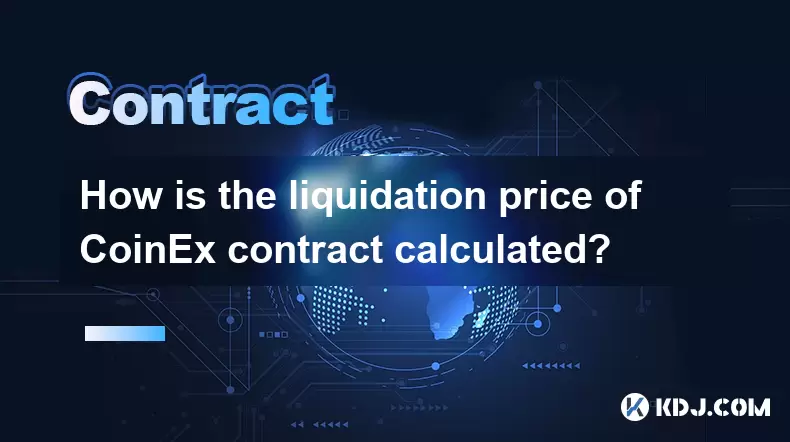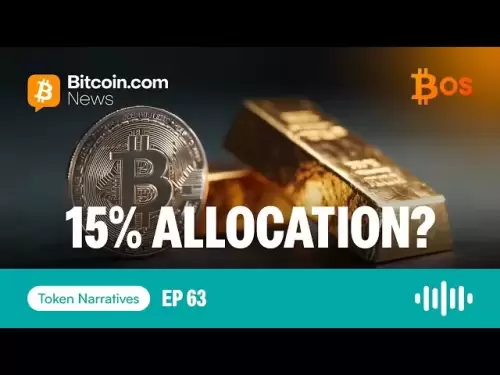-
 Bitcoin
Bitcoin $115200
-2.68% -
 Ethereum
Ethereum $3601
-5.16% -
 XRP
XRP $3.035
-2.96% -
 Tether USDt
Tether USDt $0.9997
-0.04% -
 BNB
BNB $764.5
-5.43% -
 Solana
Solana $168.1
-5.92% -
 USDC
USDC $0.9998
-0.02% -
 Dogecoin
Dogecoin $0.2090
-4.80% -
 TRON
TRON $0.3272
-0.49% -
 Cardano
Cardano $0.7306
-5.00% -
 Hyperliquid
Hyperliquid $39.16
-12.22% -
 Stellar
Stellar $0.3967
-4.96% -
 Sui
Sui $3.566
-5.95% -
 Chainlink
Chainlink $16.55
-6.57% -
 Bitcoin Cash
Bitcoin Cash $552.3
-3.90% -
 Hedera
Hedera $0.2516
-4.69% -
 Avalanche
Avalanche $21.99
-5.75% -
 Toncoin
Toncoin $3.621
-0.28% -
 Ethena USDe
Ethena USDe $1.000
-0.03% -
 UNUS SED LEO
UNUS SED LEO $8.951
0.02% -
 Litecoin
Litecoin $105.9
-3.59% -
 Shiba Inu
Shiba Inu $0.00001232
-5.00% -
 Polkadot
Polkadot $3.640
-5.55% -
 Uniswap
Uniswap $9.048
-7.03% -
 Monero
Monero $301.8
-1.51% -
 Dai
Dai $0.9999
-0.01% -
 Bitget Token
Bitget Token $4.334
-3.66% -
 Pepe
Pepe $0.00001064
-6.17% -
 Cronos
Cronos $0.1367
-5.78% -
 Aave
Aave $259.2
-4.59%
How is the liquidation price of CoinEx contract calculated?
On CoinEx Futures, your liquidation price is the level at which your position automatically closes to prevent further losses.
Jun 11, 2025 at 01:42 am

Understanding the Basics of Liquidation Price in CoinEx Contracts
The liquidation price is a critical concept for traders engaging in futures contracts on platforms like CoinEx. It refers to the specific market price at which a trader’s position will be automatically closed by the system due to insufficient margin. This mechanism protects both the trader and the exchange from further losses when the market moves against an open position.
In CoinEx futures trading, liquidation occurs when the mark price reaches the liquidation price level set by the system based on the trader's leverage, position size, and maintenance margin requirements. Understanding how this price is calculated helps traders manage their risk effectively and avoid unexpected forced closures.
Factors Influencing the Calculation of Liquidation Price
Several variables are involved in determining the liquidation price on CoinEx. These include:
- Position Size: The larger the position, the closer the liquidation price tends to be, assuming other parameters remain constant.
- Leverage Used: Higher leverage increases exposure and reduces the distance between the current price and the liquidation price.
- Maintenance Margin Rate: Each contract has a specified minimum margin requirement that must be maintained to keep the position open.
- Funding Fees: Depending on the direction of the funding rate, these fees can slightly affect the liquidation calculation over time.
- Entry Price: The initial price at which the position was opened plays a foundational role in the formula.
Each of these factors contributes to the final liquidation price value. Traders should be aware that changes in any of these elements during the lifespan of a trade can dynamically shift the liquidation price.
The Formula Behind Liquidation Price on CoinEx
For CoinEx Futures, the formula used to calculate the liquidation price differs depending on whether the trader is holding a long or short position.
For long positions, the formula is:
Liquidation Price = Entry Price × (1 - Maintenance Margin Rate - Funding Fee Rate) ÷ (Leverage - 1 × Maintenance Margin Rate)For short positions, the formula is:
Liquidation Price = Entry Price × (1 + Maintenance Margin Rate + Funding Fee Rate) ÷ (Leverage + 1 × Maintenance Margin Rate)It’s essential to note that the funding fee rate is typically very small and may only have a noticeable impact over extended periods. However, it still plays a role in precise liquidation price calculations.
Step-by-Step Example of Liquidation Price Calculation
Let’s walk through a practical example using real numbers to better understand how the liquidation price is calculated on CoinEx.
Assume the following:
- Trading pair: BTC/USDT
- Position type: Long
- Entry Price: $30,000
- Leverage: 10x
- Maintenance Margin Rate: 0.5%
- Funding Fee Rate: 0.01%
Using the formula for long positions:
Step 1: Calculate the numerator:
30,000 × (1 - 0.005 - 0.0001) = 30,000 × 0.9949 = 29,847Step 2: Calculate the denominator:
(10 + 1 × 0.005) = 10.005Step 3: Divide numerator by denominator:
29,847 ÷ 10.005 ≈ 2,983.11
This means the liquidation price would be approximately $2,983.11 for this long position. If the mark price drops to this level, the system will trigger a liquidation.
Differences Between Mark Price and Last Traded Price in Liquidation Calculations
One important point often overlooked by novice traders is that liquidation price on CoinEx is based on the mark price, not the last traded price. The mark price is a fair price derived from the underlying spot market and funding rates to prevent manipulation and ensure accurate liquidations.
If the last traded price temporarily spikes due to market volatility or thin order books, but the mark price hasn’t reached the liquidation price, the position will not be liquidated. This distinction is crucial for understanding why some positions survive sharp price swings while others don’t.
Traders should always check the mark price on the CoinEx platform before making assumptions about liquidation risks.
How to Check Your Liquidation Price on CoinEx Platform
CoinEx provides real-time visibility of your liquidation price directly within the trading interface. Here’s how you can locate it:
- Log into your CoinEx account and navigate to the Futures Trading section.
- Open the relevant trading pair and look under the "Positions" tab.
- In the position details, you’ll see a field labeled "Liquidation Price."
- Hovering over or clicking this value may also reveal additional information such as unrealized PnL, maintenance margin, and margin ratio.
For mobile users:
- Access the app and go to the Contracts tab.
- Select the active position.
- Scroll down to view the liquidation price displayed clearly.
These features allow traders to monitor their exposure continuously and make informed decisions regarding adding margin or closing positions proactively.
Frequently Asked Questions
Q: Can I adjust my liquidation price after opening a position?
A: You cannot directly change the liquidation price, but you can reduce the risk of liquidation by increasing your margin or reducing your position size manually.
Q: Does changing leverage affect the liquidation price?
A: Yes, adjusting leverage after opening a position can influence the liquidation price. Increasing leverage brings the liquidation price closer to the entry price, while decreasing leverage moves it farther away.
Q: What happens if my balance falls below the maintenance margin?
A: If your account equity falls below the required maintenance margin, your position will be partially or fully liquidated depending on the system settings and available insurance fund coverage.
Q: Is there a way to receive alerts when approaching liquidation?
A: CoinEx does not offer native alerts for liquidation price, but traders can use third-party tools or set up custom alerts via APIs or external apps that monitor wallet status and position health.
Disclaimer:info@kdj.com
The information provided is not trading advice. kdj.com does not assume any responsibility for any investments made based on the information provided in this article. Cryptocurrencies are highly volatile and it is highly recommended that you invest with caution after thorough research!
If you believe that the content used on this website infringes your copyright, please contact us immediately (info@kdj.com) and we will delete it promptly.
- Litecoin Price Watch: UNIL Pump & Staking Success Steal the Show?
- 2025-08-02 02:50:12
- Bitcoin, Crypto, Gambling Sites: 2025's Hottest Trends and Where to Bet
- 2025-08-02 02:50:12
- FTX Token's Wild Ride: FTT Drop Amidst Creditor Repayment Buzz
- 2025-08-02 01:30:12
- Navigating the Crypto Market: Bitcoin, Trader Experience, and Avoiding the Noise
- 2025-08-02 00:50:12
- Deep Agents, AI Task Management, and Evolution AI: A New Era?
- 2025-08-02 00:50:12
- AAVE Price Under Pressure: Technical Indicators Point to Bearish Momentum
- 2025-08-02 02:10:12
Related knowledge

Why is my Bitstamp futures position being liquidated?
Jul 23,2025 at 11:08am
Understanding Futures Liquidation on BitstampFutures trading on Bitstamp involves borrowing funds to open leveraged positions, which amplifies both po...

How to report Bitstamp futures for taxes?
Jul 30,2025 at 08:35am
Understanding Bitstamp Futures and Taxable EventsWhen trading Bitstamp futures, it’s essential to recognize that these financial instruments are treat...

Does Bitstamp offer inverse contracts?
Jul 23,2025 at 01:28pm
Understanding Inverse Contracts in Cryptocurrency TradingIn the realm of cryptocurrency derivatives, inverse contracts are a specific type of futures ...

What is the difference between futures and perpetuals on Bitstamp?
Jul 27,2025 at 05:08am
Understanding Futures Contracts on BitstampFutures contracts on Bitstamp are financial derivatives that allow traders to speculate on the future price...

How to find your Bitstamp futures trade history?
Jul 23,2025 at 08:07am
Understanding Bitstamp and Futures Trading AvailabilityAs of the current state of Bitstamp’s service offerings, it is critical to clarify that Bitstam...

Can I use a trailing stop on Bitstamp futures?
Jul 23,2025 at 01:42pm
Understanding Trailing Stops in Cryptocurrency TradingA trailing stop is a dynamic type of stop-loss order that adjusts automatically as the price of ...

Why is my Bitstamp futures position being liquidated?
Jul 23,2025 at 11:08am
Understanding Futures Liquidation on BitstampFutures trading on Bitstamp involves borrowing funds to open leveraged positions, which amplifies both po...

How to report Bitstamp futures for taxes?
Jul 30,2025 at 08:35am
Understanding Bitstamp Futures and Taxable EventsWhen trading Bitstamp futures, it’s essential to recognize that these financial instruments are treat...

Does Bitstamp offer inverse contracts?
Jul 23,2025 at 01:28pm
Understanding Inverse Contracts in Cryptocurrency TradingIn the realm of cryptocurrency derivatives, inverse contracts are a specific type of futures ...

What is the difference between futures and perpetuals on Bitstamp?
Jul 27,2025 at 05:08am
Understanding Futures Contracts on BitstampFutures contracts on Bitstamp are financial derivatives that allow traders to speculate on the future price...

How to find your Bitstamp futures trade history?
Jul 23,2025 at 08:07am
Understanding Bitstamp and Futures Trading AvailabilityAs of the current state of Bitstamp’s service offerings, it is critical to clarify that Bitstam...

Can I use a trailing stop on Bitstamp futures?
Jul 23,2025 at 01:42pm
Understanding Trailing Stops in Cryptocurrency TradingA trailing stop is a dynamic type of stop-loss order that adjusts automatically as the price of ...
See all articles

























































































